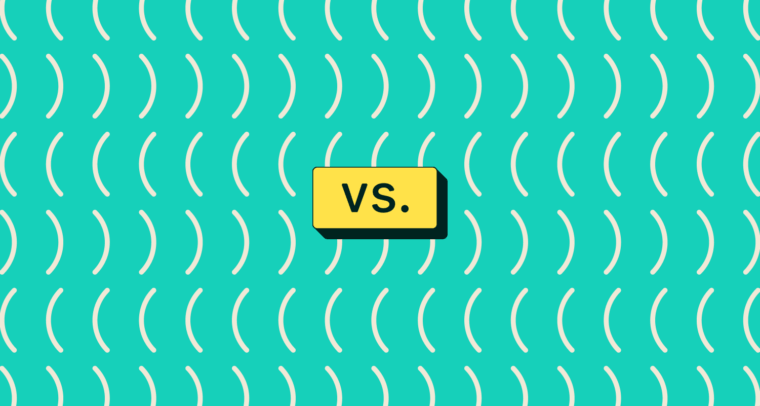
Imagine, for a moment, that you’re standing in a library searching for a book by your favorite author, Truman Capote. As you prepare to scour the stacks, you figure it shouldn’t be too hard to locate Capote’s best-selling In Cold Blood.
But with one sign pointing toward the fiction titles and another indicating that nonfiction is on a different floor, you realize you’re not sure what genre the book, based on a true story, belongs to.
This example illustrates the problem of distinguishing between fiction and nonfiction. For writers and readers alike, it can be difficult to tell the difference—especially when the two genres often intersect. To save you from confusion, we’re here to clarify what sets fiction and nonfiction apart with helpful definitions, examples, and more. Let’s dive in!
Fiction vs. nonfiction
Fiction and nonfiction are two distinct categories of prose that serve different purposes and employ different narrative techniques. Fiction refers to literature that is not grounded in real-life events but is made up or created from a writer’s imagination. Nonfiction refers to factual stories based on real people, information, or events.
What is fiction?
Fiction is a literary genre that encompasses imaginative storytelling. It involves the creation of characters, settings, events, and narratives that do not exist in the real world. In fiction, authors use their creativity to write stories that are often for the purpose of entertainment, exploring themes, or artistic expression.
Beneath the umbrella of fiction are many subgenres, including mystery, romance, fantasy, magical realism, thriller, science fiction, crime, and horror. Some fictional works combine multiple subgenres, fusing elements of various categories to create a hybrid story, such as Mary Shelley’s Frankenstein (science fiction and horror) or Stephenie Meyer’s Twilight series (paranormal romance).
What is nonfiction?
Nonfiction, by contrast, refers to factual stories about real people, places, and events. In works of nonfiction, authors relay accurate, verifiable information. These insights, experiences, or explanations are grounded in reality and are used to educate, persuade, or document true events and occurrences.
The word nonfiction essentially means “not fiction” or “not false.” By definition, then, nonfiction implies a certain level of truth or authenticity. This typically generally results in people holding nonfiction to a higher standard than fiction. A few facts thrown into a work of fiction do not make it true, whereas a few fabrications in a work of nonfiction will completely obliterate its credibility.
As the broadest category of writing, nonfiction can encompass works in many different categories, such as business, cooking, travel, biography, religion, art, music, languages, pets, crafts, and health and fitness. Nonfiction can take on various forms, including essays, articles, memoirs, scientific papers, textbooks, travelogues, and more.
Nonfiction vs. creative nonfiction
To further complicate matters, writers also categorize some nonfiction writing as creative nonfiction. Creative nonfiction can also be called literary nonfiction or narrative nonfiction.
The classic book In Cold Blood is an example of creative nonfiction. While much of the book is rooted in fact, Capote employs literary devices such as voice, rising action, denouement, and imagery to evoke empathy in the reader.
In essence, the primary distinction between nonfiction and creative nonfiction is the way they present information. Nonfiction aims to inform and educate in an objective manner, while creative nonfiction combines the factual with the creative, using literary devices to engage readers on an emotional and narrative level just like a novel.
Examples of fiction and nonfiction
The following examples illustrate the diversity of both fiction and nonfiction, showcasing the wide range of topics, formats, and themes that each genre can explore.
Examples of fiction
- Short story: A Perfect Day for Bananafish by J.D. Salinger
- Novel: To Kill a Mockingbird by Harper Lee
- Play: Hamlet by William Shakespeare
- Literary fiction: Ulysses by James Joyce
- Fable, fairy tale, and folklore: Snow White and the Seven Dwarves
- Genre fiction: The Gift by Danielle Steel
Examples of nonfiction
- Memoir: Hunger by Roxane Gay
- Essay: Slouching Towards Bethlehem by Joan Didion
- Biography: Unbroken by Laura Hillenbrand
- Autobiography: The Diary of Anne Frank by Anne Frank
- History: Sapiens by Yuval Noah Harari
- Feature writing: Kitchen Confidential by Anthony Bourdain
Fiction vs. nonfiction FAQs
What’s the difference between fiction and nonfiction?
Fiction involves storytelling and imagination, featuring invented worlds and characters. By contrast, nonfiction is focused on presenting factual information and real-world knowledge.
What are different kinds of fiction?
Beneath the umbrella of fiction are many subgenres, including:
- Mystery
- Romance
- Fantasy
- Magical realism
- Thriller
- Science fiction
- Crime
- Horror
What are different kinds of nonfiction?
Nonfiction is a broad genre that encompasses a wide range of subjects and styles. Nonfiction works can take the form of the following:
- Memoir
- Essay
- Journalism
- Autobiography
- Biography
- Feature writing
- Travelogue
- Academic texts
- Self-help
- Science






